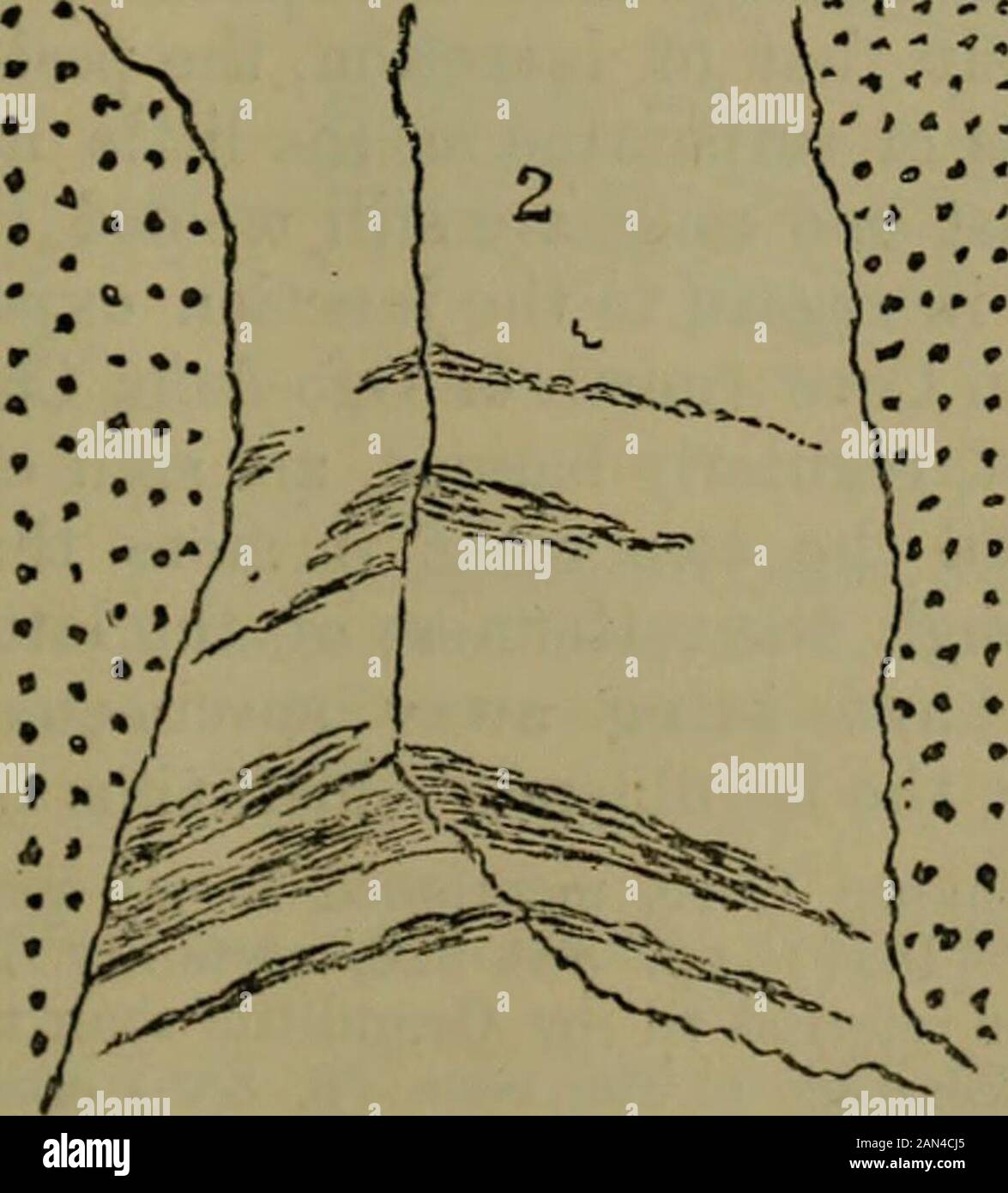The Quarterly journal of the Geological Society of London . 1. Serpentine. 2. Reddish granitoid rock, with dark bands (Granulitic Group). one of less regular structure, the granitic veins may be seen to runup to the serpentine, and be, as it were, cut off by it (fig. 2). Sofar as structure goes, the relations of the Granulitic Group and theserpentine are identical with those which are exhibited by bandedgneisses or schists, and granites intrusive into them. Fig. 2.—Section near Cavour/a Roclcs.. 1. Serpentine. 2. Granulitic Group. The darker part represents the dioritic, tlie lighter the grani

Image details
Contributor:
The Reading Room / Alamy Stock PhotoImage ID:
2AN4CJ5File size:
7.1 MB (203.6 KB Compressed download)Releases:
Model - no | Property - noDo I need a release?Dimensions:
1503 x 1662 px | 25.5 x 28.1 cm | 10 x 11.1 inches | 150dpiMore information:
This image is a public domain image, which means either that copyright has expired in the image or the copyright holder has waived their copyright. Alamy charges you a fee for access to the high resolution copy of the image.
This image could have imperfections as it’s either historical or reportage.
The Quarterly journal of the Geological Society of London . 1. Serpentine. 2. Reddish granitoid rock, with dark bands (Granulitic Group). one of less regular structure, the granitic veins may be seen to runup to the serpentine, and be, as it were, cut off by it (fig. 2). Sofar as structure goes, the relations of the Granulitic Group and theserpentine are identical with those which are exhibited by bandedgneisses or schists, and granites intrusive into them. Fig. 2.—Section near Cavour/a Roclcs.. 1. Serpentine. 2. Granulitic Group. The darker part represents the dioritic, tlie lighter the granitic rock. The serpentine, in the tongues, and near the granulitic rockgenerally, exhibits little indication of having been crushed : thoughnow and then a faint resemblance to a foliation—recalling to some 470 PROF. T. G. BONNF.Y AND MAJOR-GEN. C. A. M^MAHOX extent a fluidal structure—may be detected. The rock, however, is usually rather rotten; very commonly there is a dusty-looking, pale-coloured, more or less chrysotilic layer between the two rocks, which is continuous with the serpentine, but does not adhere to thegranulitic mass. Indeed we have never found the two rocksactually welded. Signs of crushing and slickensides may no doubtbe not unfrequently seen at junctions. This is only to be expected, because the tenacit} of the two rocks is so different that, even ifwelded, they would have parted here under strains from ordinaryearth-movements. The serpentine also at the margins is oft